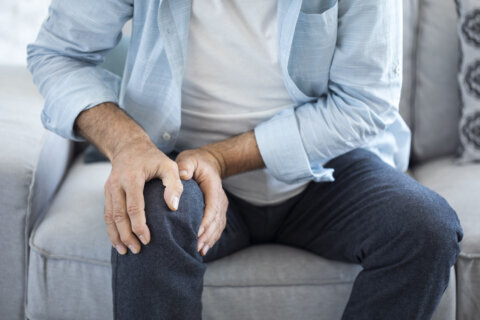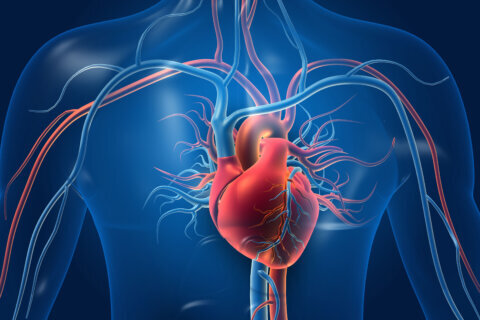This content is provided by MedStar Washington Hospital Center.
Playing sports can help athletes of all ages learn lifelong skills such as setting goals and time management while getting in some exercise. Despite these benefits, there is a degree of risk involved with physical activity, such as bone fractures, sprains and concussions.
Although most sports injuries are minor, some rare cases involve the heart, which can lead to life-or-death situations. A recent example is when Buffalo Bills safety Damar Hamlin took an impactful hit to the chest and collapsed during an NFL game in January 2023.
Months later, in July, Bronny James, the son of NBA superstar LeBron James, was rushed to the hospital after going into cardiac arrest and collapsing during a workout. A family spokeswoman later confirmed that a congenital heart defect led to James’ cardiac arrest.
However, Hamlin experienced commotio cordis, which is a rare condition that occurs when a direct blow to the chest causes an abnormal heart rhythm. Dr. Aubrey Grant, a sports cardiologist at MedStar Health at Lafayette Centre and MedStar Union Memorial Hospital says the CPR Hamlin received right after he collapsed played a vital role in his recovery.
“What I saw on national television was a massive, and a beautiful execution of an emergency action plan, with a high level focus on good quality CPR,” Dr. Grant said. “Now we see Demar actually returned to sports almost less than a year later.”
Some may find it miraculous that Hamlin was able to return to football less than a year after the incident, but Dr. Grant said the planning and execution of the providers are really to thank.
“In an emergency situation everyone knows what their job and task is. And when you have that, you have this beautiful concert where people are moving in unison to save someone’s life.”
Dr. Grant says athletes at any level can experience what Hamlin went through, and parents, volunteers, and coaches can save someone’s life by being prepared while awaiting the arrival of paramedics. This preparation includes cardiopulmonary resuscitation or CPR. The American Heart Association says proper CPR can triple a person’s chances of survival.
“I think having everyone trained with a basic understanding of what cardiopulmonary resuscitation looks like, would be so dynamic in efforts of improving outcomes related to sudden cardiac death,” he said.
When the heart stops, the risk of organ damage and death increases the longer blood flow is interrupted, making it critical to give CPR immediately. Untrained people can perform hands-only CPR while waiting for help to arrive.
Additionally, Dr. Grant recommends advocating for having an automated external defibrillator (AED) at sporting events. AEDs are portable devices designed for non-medical bystanders. They are typically available in more public places like community buildings and shopping centers.
“In the advent that they are needed, they need to be close by and available, certainly they work and they’re easy to use, but if they’re not available, then they can’t be helpful.”
An AED stimulates the heart back into a rhythmic heartbeat when sudden cardiac arrest disrupts the natural electrical pulses that causes the heart to pump. It uses voice prompts, lights and written instructions to talk you through how to use it.
Because it can be difficult to think clearly in the heat of the moment, Dr. Grant highly encourages sport programs to put an emergency action plan in place for an orderly response to life-threatening injuries.
Through his sports cardiology research, Dr. Grant and researchers have found disparities in sudden cardiac death between Black and white athletes that could be related to performance of high-quality CPR. Because of this, he says it can be beneficial to include implicit bias awareness as part of training.
“Training our workforce to really understand what these biases are, so that we can take a sort of a more informed approach of how we take care of people.”
Dr. Grant says although participation in sports comes with risks and can cause injuries, it doesn’t surpass the long-term benefits seen from exercise endurance training, and team building.
“But certainly doing sports in a safe and healthy way – I think is really sort of the best way to get the maximum amount of benefit from this,” he said.
Read more about sudden cardiac arrest in a post by Dr. Grant on the MedStar Healthwebsite.







